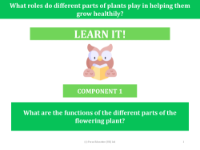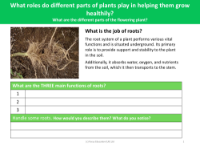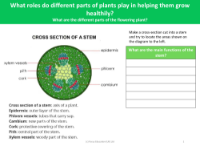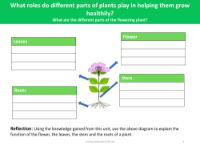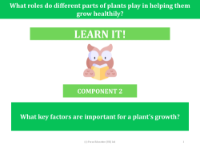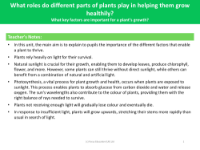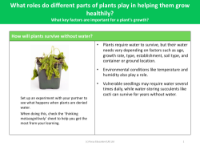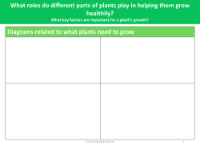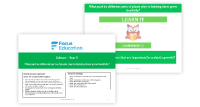What part do different parts of plants play in helping them grow healthily? - presentation
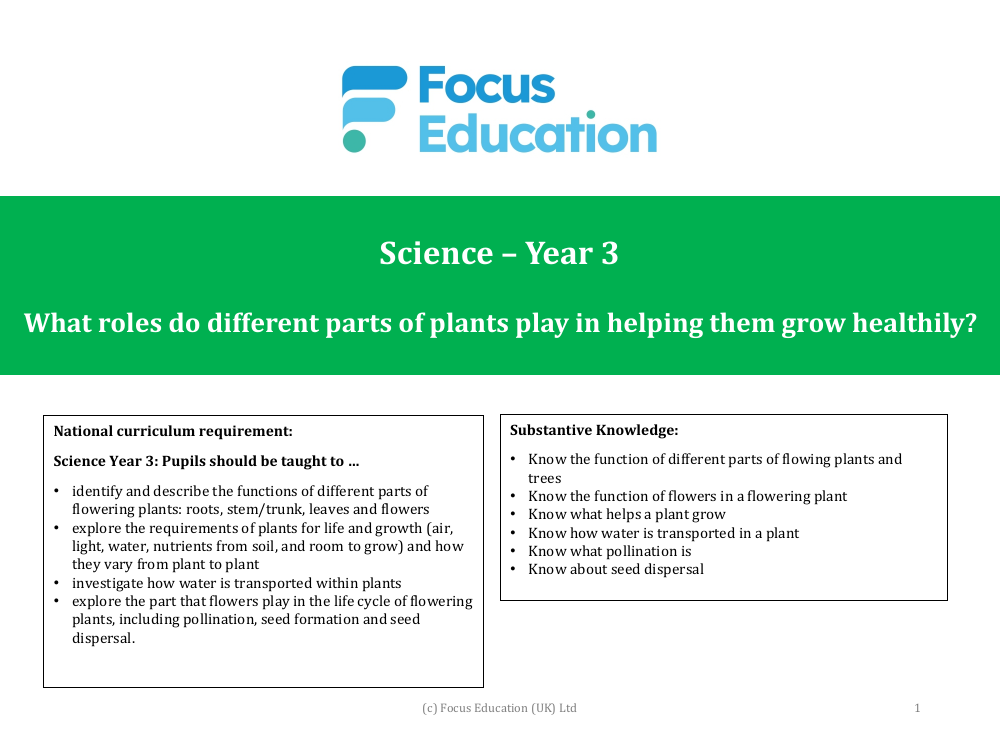
Science Resource Description
The curriculum for Science Year 3 includes an in-depth exploration of the roles different parts of plants play in their growth and development. Pupils are taught to identify and describe the functions of various components of flowering plants, such as roots, stems or trunks, leaves, and flowers. These components are integral to a plant's ability to absorb nutrients and water, conduct photosynthesis, and reproduce. For instance, roots anchor the plant and absorb water and nutrients from the soil, while the stem or trunk supports the plant and serves as a conduit for transporting these resources. Leaves are the sites of photosynthesis, converting light energy into chemical energy, and flowers are involved in reproduction through pollination, seed formation, and seed dispersal.
Understanding the requirements for a plant's life and growth is another key aspect of the curriculum. Pupils learn that plants need air, light, water, nutrients, and space to grow, and these requirements can vary from species to species. Investigating how water is transported within plants helps students grasp the complex processes that sustain plant life. Additionally, the curriculum covers the life cycle of flowering plants, focusing on the role of flowers in pollination, the development of seeds, and the mechanisms of seed dispersal. These concepts are reinforced through practical observation, research, and the introduction of relevant vocabulary such as pollination, seed dispersal, and nutrients, enhancing the pupils' substantive knowledge and scientific understanding.
